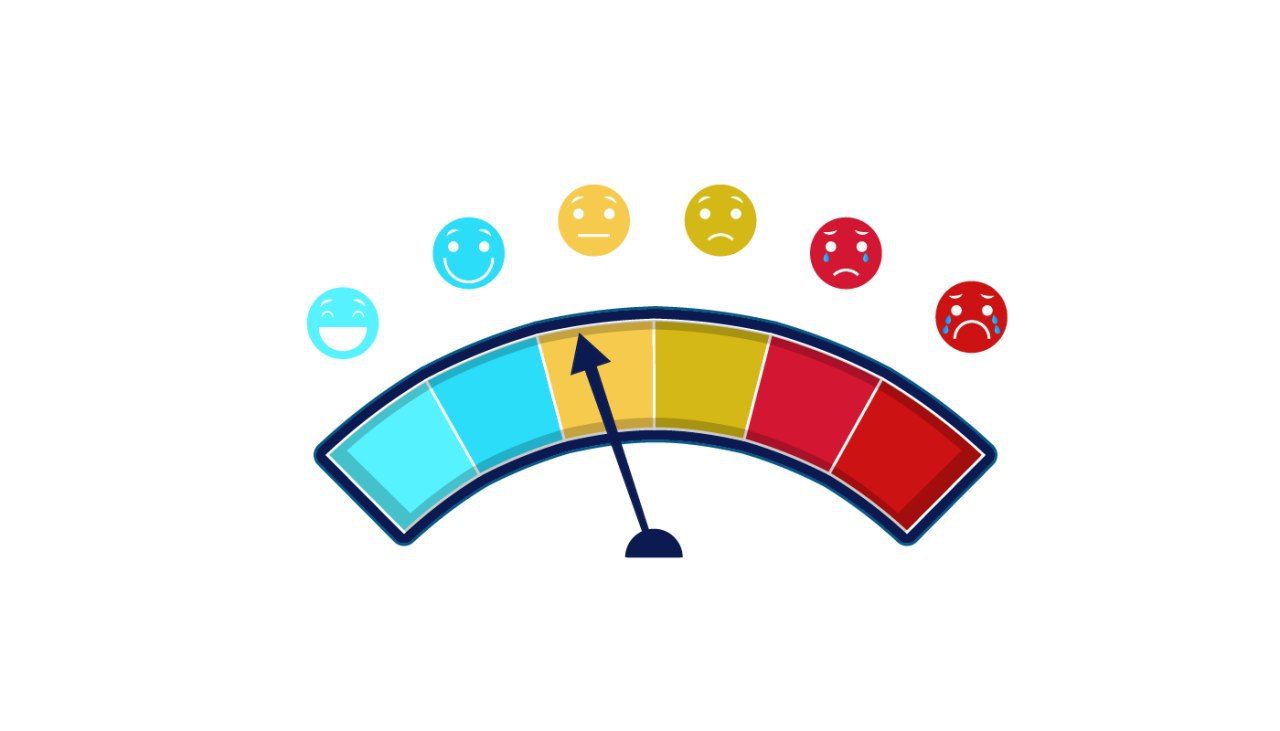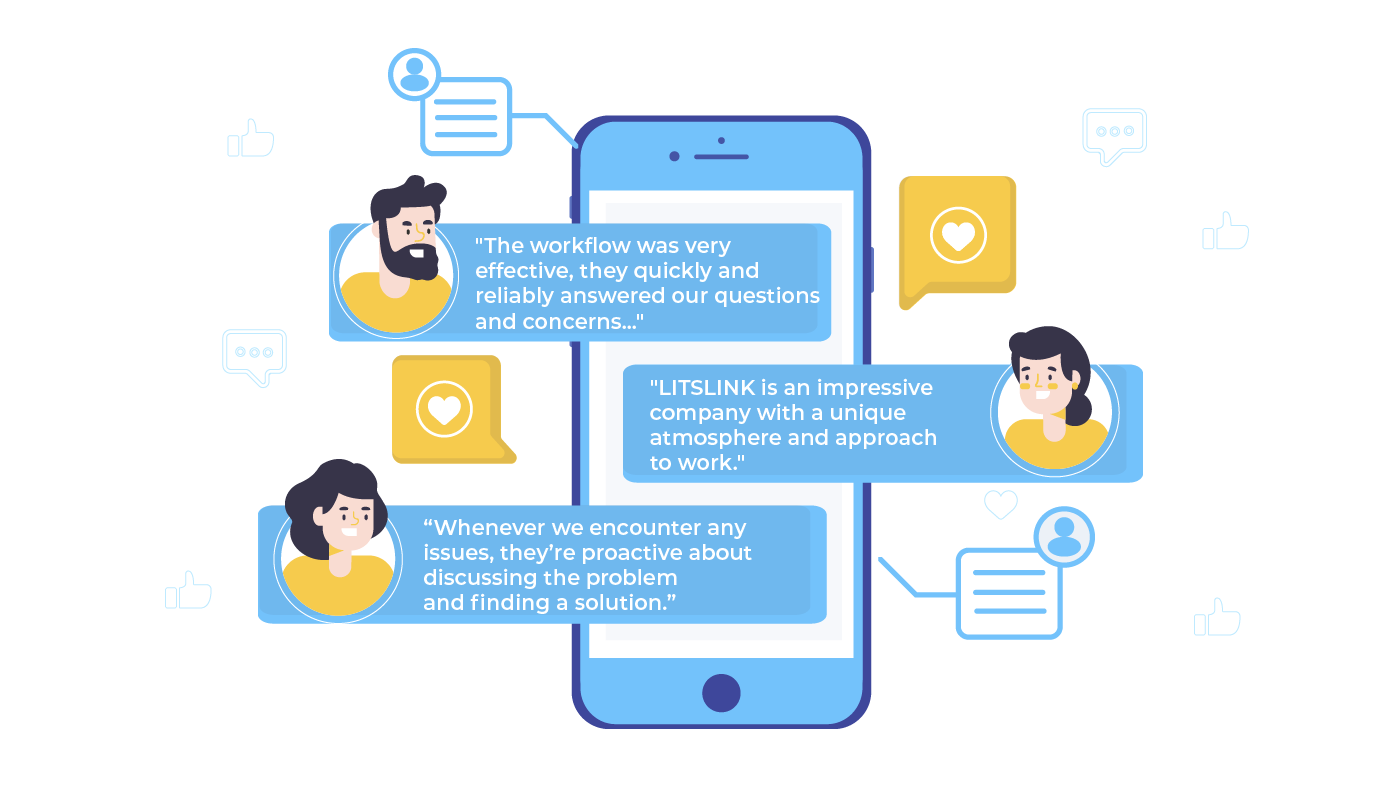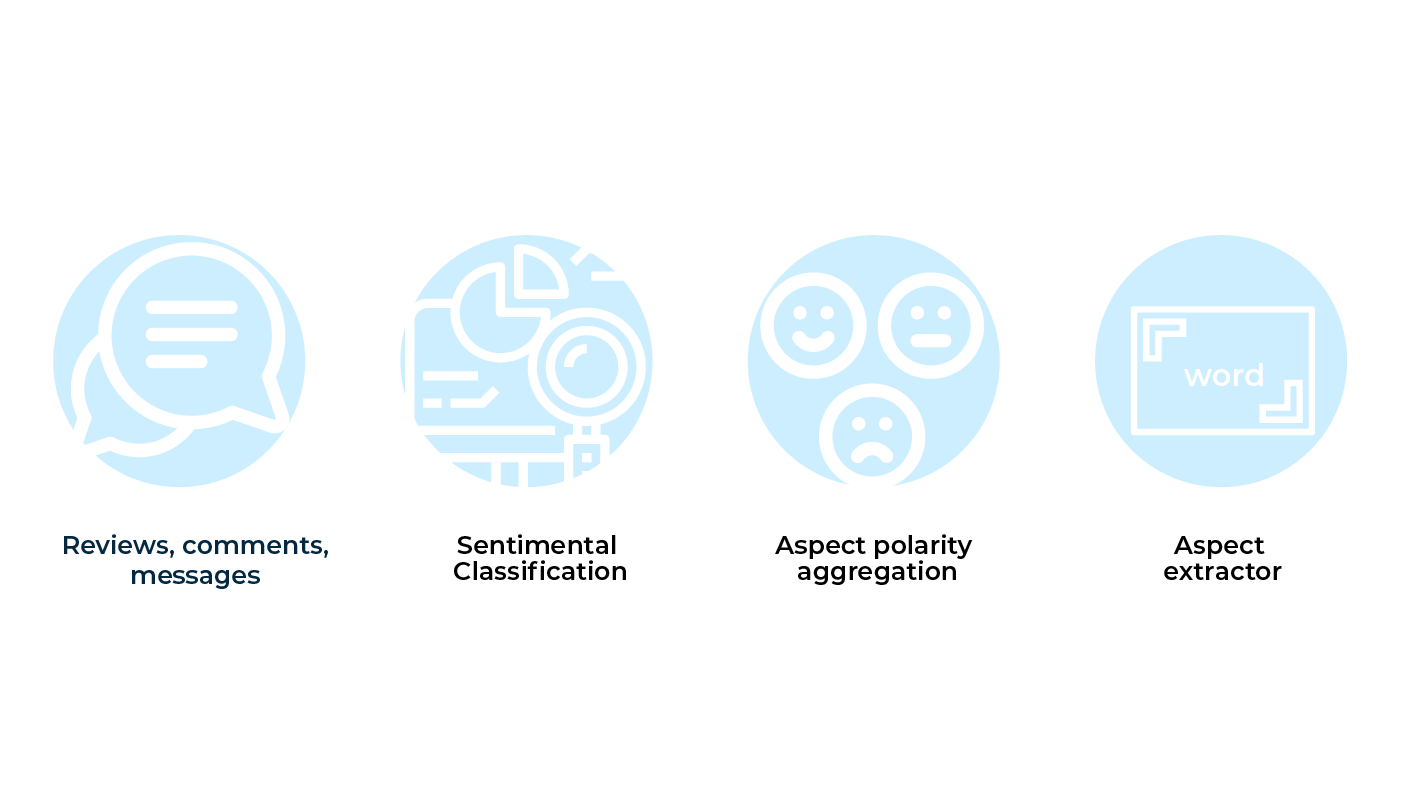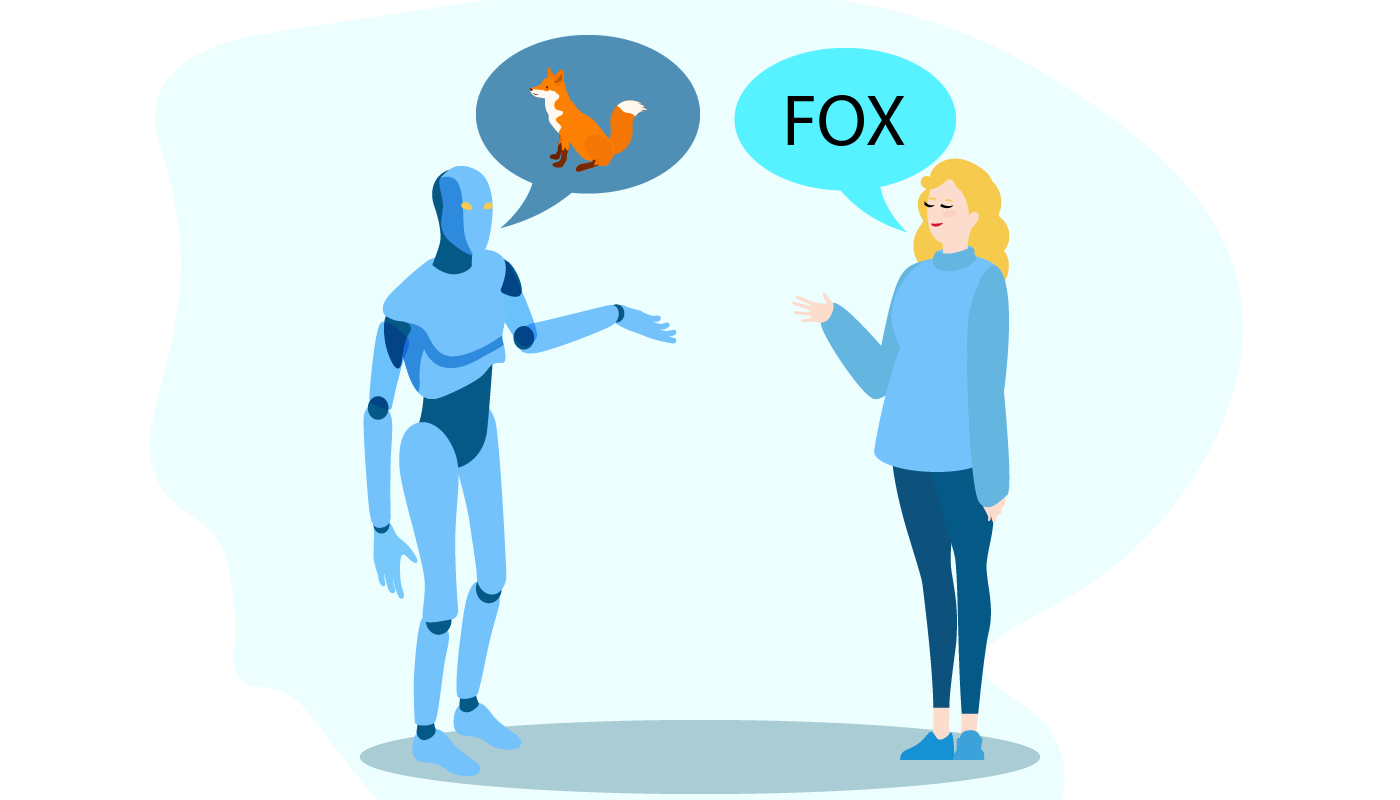The times when direct advertising and word of mouth were the only options for customers to choose the right product are long gone. Nowadays, the Internet provides an ideal gateway for everyone who wants to know what others think about a certain item before actually buying it. Besides, businesses can benefit a lot by knowing the real attitude towards their brands. For instance, to improve the quality of a new service. Thus, sentiment analysis has become part and parcel for both companies and their clients. Read on to find out more about the sentiment analysis and how businesses can use it.

What is the Sentiment Analysis?
These days people can express their feelings and emotions in many ways — through social media platforms such as Twitter, Facebook or Instagram, blog posts, reviews websites, forums, etc. They can also freely provide feedback about various products and services. Users might easily influence buying decisions by leaving a devastating review of a washing machine or a favorable one of a new blockbuster.

Consequently, the Internet generates tons of information published by millions of people that is difficult to analyze, but that can be valuable, and which is more important, a lucrative source that can provide businesses with revealing insights. And this is when the sentiment analysis is brought to help you with this task. To define the sentiment is quite easy:
The sentiment is an opinion, idea, or thought based on a certain emotion and shows subjective impressions, not facts.
The sentiment analysis is the process of extracting and identifying sentiments from a text by means of machine learning, natural language processing, and statistics.
We can perform sentiment analysis by analyzing a vast scope of text from different sources, on a particular product or service to understand an overall attitude toward it. Such solutions are often applied to answer a lot of business-related questions, such as::
- How are people responding to our new email marketing campaign?
- Why our clients do not buy this particular mobile phone?
- Are my customers happy about this new service?
To receive an insightful response to these questions, we can have a questionnaire that will ask the users directly, a poll, tweets, comments, that can be extracted from a whole message or just a piece of it.
What are the Main Types of Sentiment Analysis?
There are several main types of sentiment analysis: fine-grained sentiment analysis, emotion detection, and aspect-based sentiment analysis. Now, let’s consider them in more detail.

Fine-Grained Sentiment Analysis
This type of analysis is based on the polarity of opinion, which can have a simple positive or negative sentiment. Or it can also have somewhat complicated variation, such as very positive, positive, neutral, negative, and very negative sentiments.
A simple positive/negative analysis is useful when we work with large data sets to learn about positive or negative sentiments respectively. It will perfectly do for tweets or product reviews. But when it comes to more complex texts that have, for instance, comparative expressions, we can use a more complicated fine-grained analysis.
Emotion Detection
This type of sentiment analysis is used to determine types of feelings through text. With the help of machine learning algorithms and lexicons, such an analysis can show what kind of emotion prevails and is presented in a text. Is it angry, happy, fearful, etc? Understanding feelings will help understand customers better and improve their business.
Aspect-Based Sentiment Analysis
Aspect-based Sentiment Analysis performs two main processes:
- aspect extraction
- aspect sentiment classification
Aspect extraction is performed when we want to extract certain information from a piece of text, for instance, you want to know what users think about the touch screen of the new mobile phone.
Aspect sentiment classification helps to determine sentiment towards that extracted information — positive, negative, or neutral. It is applicable when you want to know whether your customers like the screen or if they find it insensible to the touch?
The Aspect-based Sentiment classification takes the next four stages :
Reviews, comments, and messages are taken to find sentiments for aspects, which undergo four main stages:
- Text extraction — when sentences and phrases are taken out of the text.
- Sentiment classification helps to determine if the extracted text is positive, negative, or neutral.
- Aspect extractor singles out terms for a certain sentiment.
- Aspect polarity aggregation makes groups of sentiments for aspects and provides a final conclusion.

What are the Main Challenges of Sentiment Analysis?
Despite being a promising tool for various businesses that helps to improve their products and services, sentiment analysis is yet to overcome certain hurdles. For instance, it’s still difficult for technology to show the difference between messages with genuine attitude and sarcasm, fake messages and real ones or pinpoint the context behind a certain word.
In addition, users have a different command of the English language and their grammar or vocabulary might be poor. Users often misspell words, use incorrect sentence constructions, etc., which makes it difficult to use sentiment analysis because of the inconsistency of various users’ language.
Why Use Sentiment Analysis in Business?
Sentiment Analysis can be applied in various ways to serve businesses. Here are the main domains where you can use the analysis.
Brand Performance
It can be used for monitoring your brand performance. Brand is a whole system that evokes certain feelings, emotions. associations in a user and makes your company successful or vice versa. Rolex is associated with quality, precision, and luxury, while some brands are associated with affordability, for instance, Tissot, Seiko, and Timex . This is why it’s important to use sentiment analysis to monitor social media channels and detect positive and negative sentiments towards your brand.
Unrivaled in quality
Had my Milgauss for a decade. It has been around the world with me and I have never had an issue (and the free steam cleanings are always nice). Rolex simply makes an extraordinary, unique and efficient timepiece that is unrivaled in quality.
Brand Performance of Your Competitors
Sentiment analysis can be used not only for monitoring sentiments about your brand but also for your competitors. It is useful especially those companies that are in the same niche as you. Thus, you can see what kind of products and services users like or dislike about your rival and adjust your business strategy accordingly.
Crisis Prevention
It’s always better to prevent a crisis from happening than dealing with its disastrous aftermath. In this case, sentiment analysis comes in handy. By monitoring real-time comments or reviews, you can easily detect negative sentiments and avert a disastrous crisis. For instance, as soon as you detect a lot of negativity towards your brand, you can assess the reason behind it and come up with a strategy of how you can avoid negative results for you.
How Much Does It Cost to Apply Sentiment Analysis?
If you are looking for a proof of concept (PoC) test, it’ll cost you approximately $2000-5000. But the pricing varies if you’d like to have a solution that will help you conduct sentiment analysis — it depends on your specific requirements and needs.
You can contact us here for PoC or a sentiment analysis solution.
Make the Best Out of Sentiment Analysis with LITSLINK!
Users around the globe have freedom to share their opinions online nonstop. Thus, multiple social media platforms are flooded with messages, reviews, and tweets where people express their opinions on different topics, services, and products. This information comes in a form of text and can have valuable insights for a lot of businesses.
Sentiment analysis helps to analyze text and find negative, neutral and positive sentiments of users towards brand or particular product or service. This way companies can easily tweak and improve them. It also helps to monitor your brand performance and performance of rivals, and prevent crisis by analyzing text in real-time. These applications of sentiment analysis make it an indispensable part of any business. AI consulting will help you benefit from sentiment analysis.




![Unlocking Competitive Edge: Harnessing the Potential of Machine Learning Across Various Industries [Includes Infographic]](https://litslink.com/wp-content/uploads/2021/03/featured-machine-learnig-applications_1.jpg)
